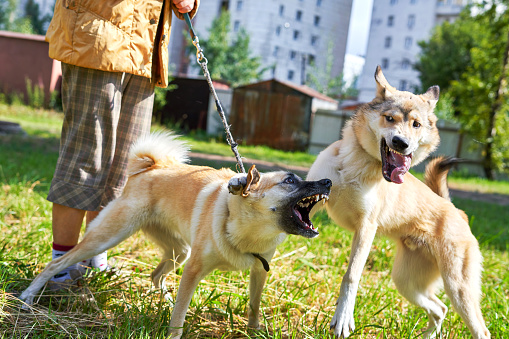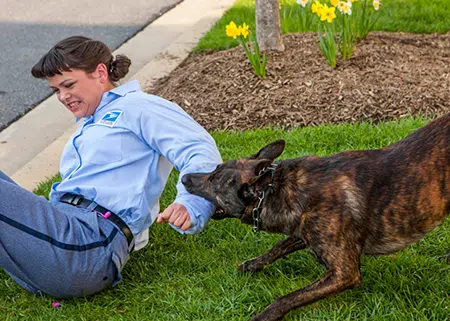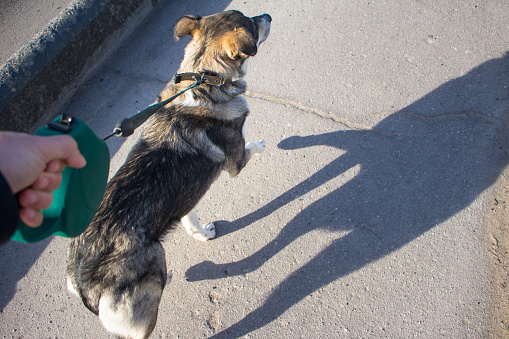
When a dog bites children, the animal tends to inflict bites on their head, face, and neck. The child bends down to pet a dog and could be tragically scarred for life. Children tend not to be as cautious as most adults, and their movements are quick. They get close to and overwhelm an animal and it reacts out of fear. Some of these incidents become dire situations.
Any visible area of the body, but especially the face is a psychologically significant area of the body, and disfigurement has been found to have numerous potential social consequences for child and adult victims of facial trauma. These body image issues range from anxiety and depression to post-traumatic stress disorder (PTSD) symptoms and affect the victim’s social life and general quality of life.
The Full Effects of Facial Scarring Are More Than What You See
Researchers at the National Institutes of Health (NIH) have found that even minor facial lacerations increase anxiety and social self-consciousness in patients as long as six months or more after their injury. Large scars, the location of the scar, the age and sex of the victim, and the origin of the injury were essential factors in the long-term psychological impact of the scarring.
A scar may make a person feel embarrassed or lacking in self-confidence. Some people report feeling angry and isolated. Although scars are considered desirable in some societies, for the most part, American society views them as undesirable. The misconception is people with scars are not as likely to be pleasant people.
Depression and anxiety associated with facial trauma place the patient at increased risk for suicide, poor compliance with treatment, and poor rehabilitation outcomes. The person often faces a lengthy recovery process with multiple surgeries. The NIH reported that up to 70 percent of patients experience depression and anxiety after facial trauma. They also recorded higher rates of somatoform symptoms (psychological issues), substance abuse, stigmatization, and problems in marital, occupational, and social functioning.
PTSD from a Dog Attack
Dog bite victims often suffer from PTSD, including children, especially those with severe bites to the face. Symptoms generally first appear within 2 to 9 months of the incident, but some studies have shown that within five days of a bite, 98% of children were symptomatic of PTSD, depression, or anxiety. Twelve months after the incident, nearly half of the children (42%) were reporting flashbacks, fear of re-injury, mood disorders, sleep disturbances, and anxiety.
Doctors at the Mayo Clinic report that PTSD symptoms in children also include heightened emotional arousal, impulsivity, aggression, and play, in which the child re-enacts aspects of the traumatic event. Other signs of PTSD in children include night terrors, intense phobias, decreased school performance, reduced creativity, altered appetite, withdrawal and pronounced startle responses, increased irritability, and tension.
Those who study traumatizing events in children reveal that hormones are secreted during a traumatic event which may be neurotoxic to the main part of the brain dealing with memory—the hippocampus. According to a 2010 report in the Journal of Pediatric Psychology, PTSD has a causal effect on memory. In any event, PTSD is complex to overcome. Your child will likely need the help of psychologists and therapists.
Scars Affect People in Five Main Areas
In an article entitled “The Psychological Impact of Scars in Children,” which appeared in the August 2012 issue of the-dermatologist.com, the author concluded that a child’s emotional and mental issues about a scar are far-reaching and variable. Scars affect individuals in five main areas:
- physical comfort and functioning
- acceptability of self and others
- social functioning
- confidence in the nature and management of the condition
- emotional well being
Sometimes it is difficult to tell how scars will develop as a child grows. Will they look worse as time goes on or fade with age?
Under Ohio statute, a child who a dog bites has six years from the date of his 18th birthday to file a claim. This statute of limitations can be beneficial to the child victim. An adult bitten by a dog has six years to file under strict liability and two years to file a negligence claim.
Injuries can include cuts and lacerations, muscle and nerve damage, ligament and tendon damage, broken bones, rabies, and infections from the aforementioned injuries.
The Extent of Damages from a Dog Bite
Damages from a dog bite may include past and future medical expenses, cosmetic surgery, physical therapy, psychological counseling, permanent scarring, loss of quality of life, loss of future earning capacity, temporary or permanent disability, and physical pain and suffering. Some of these expenses, such as pain and suffering, disability, and future medical costs, cannot be calculated precisely. These are non-economic, intangible damages and would also include things like emotional fright, where, in the aftermath of the bite, the victim is terrified of any dog he or she encounters.
We cannot remove the scars that may result from a dog attacking a child, but our dog bite attorneys can help you recover compensation to help your family put things right again. We offer a free initial consultation if a dog has attacked you or someone you love. If you decide to hire us, your case will be a top priority, and we will report to you regularly on its progress. Please call us at 888.534.4850 and speak with one of our dog bite lawyers. They know the law in Ohio and can put it to work for you.





